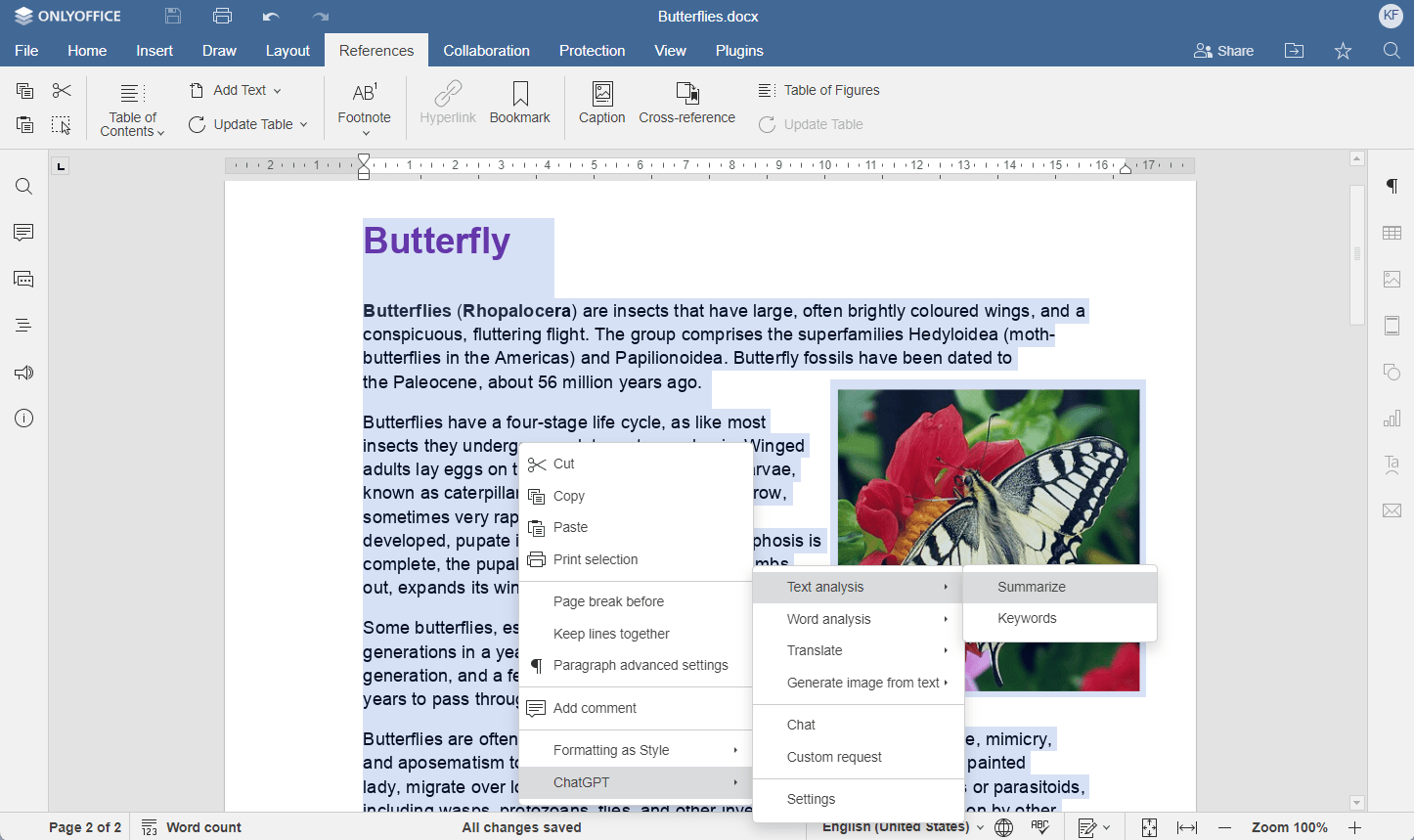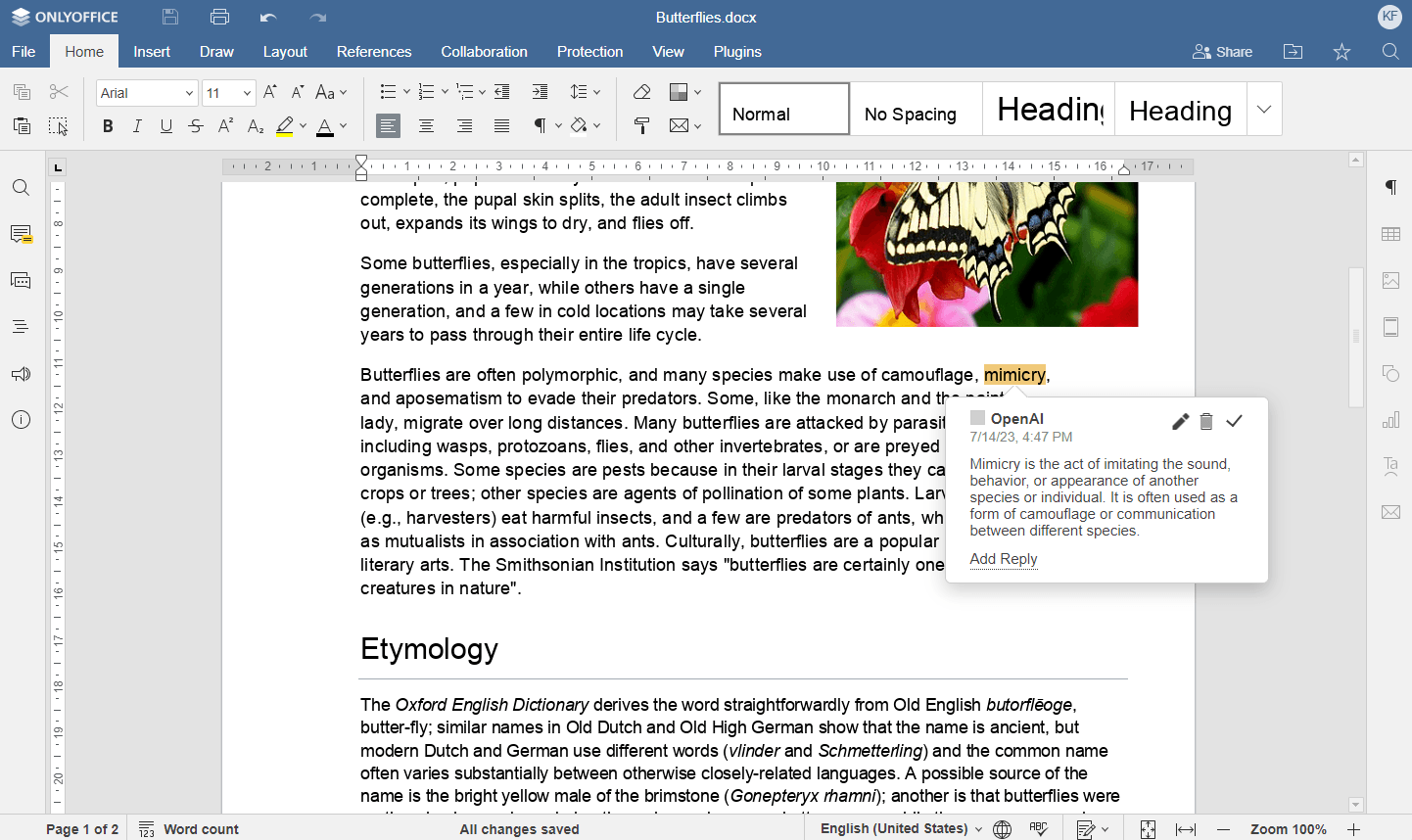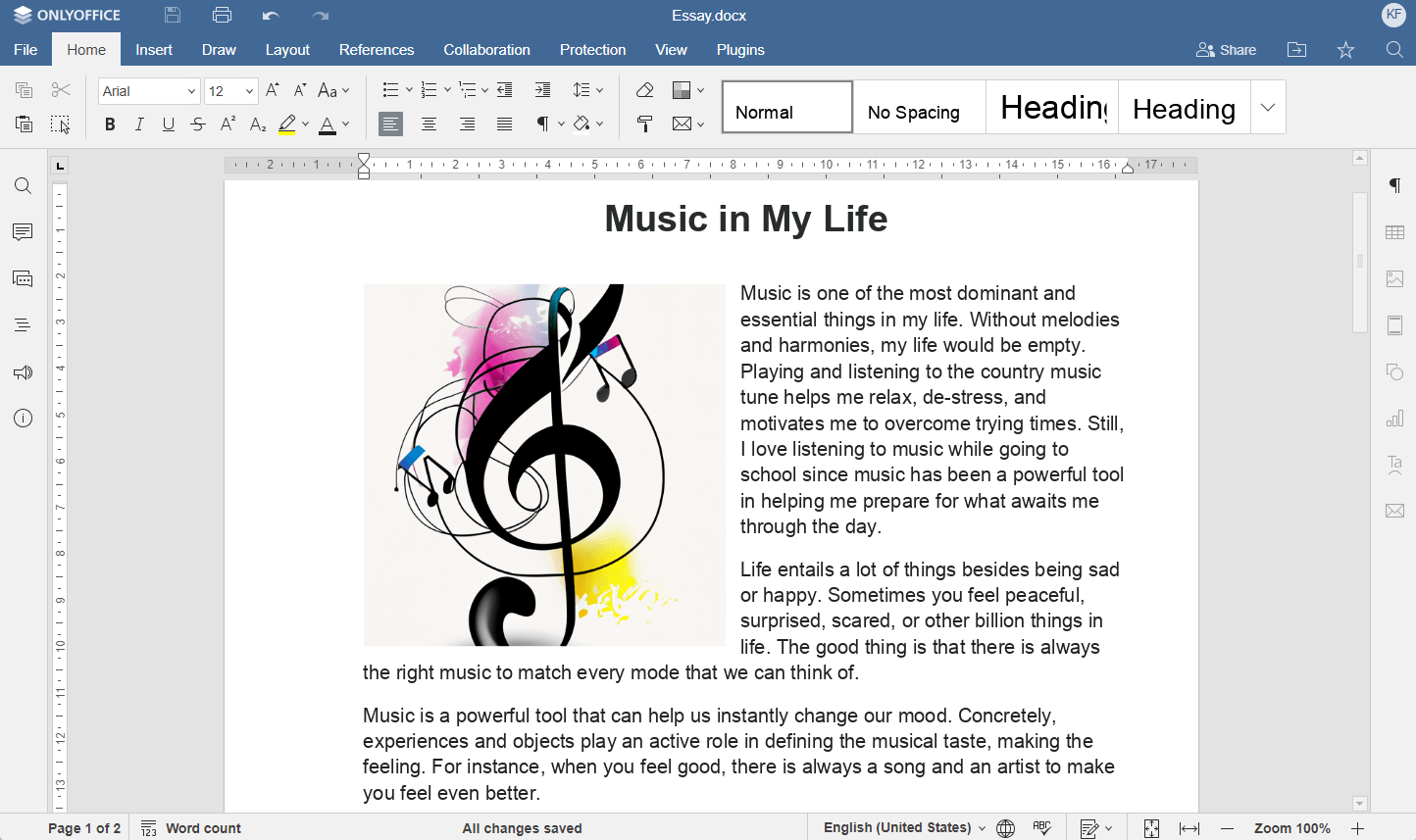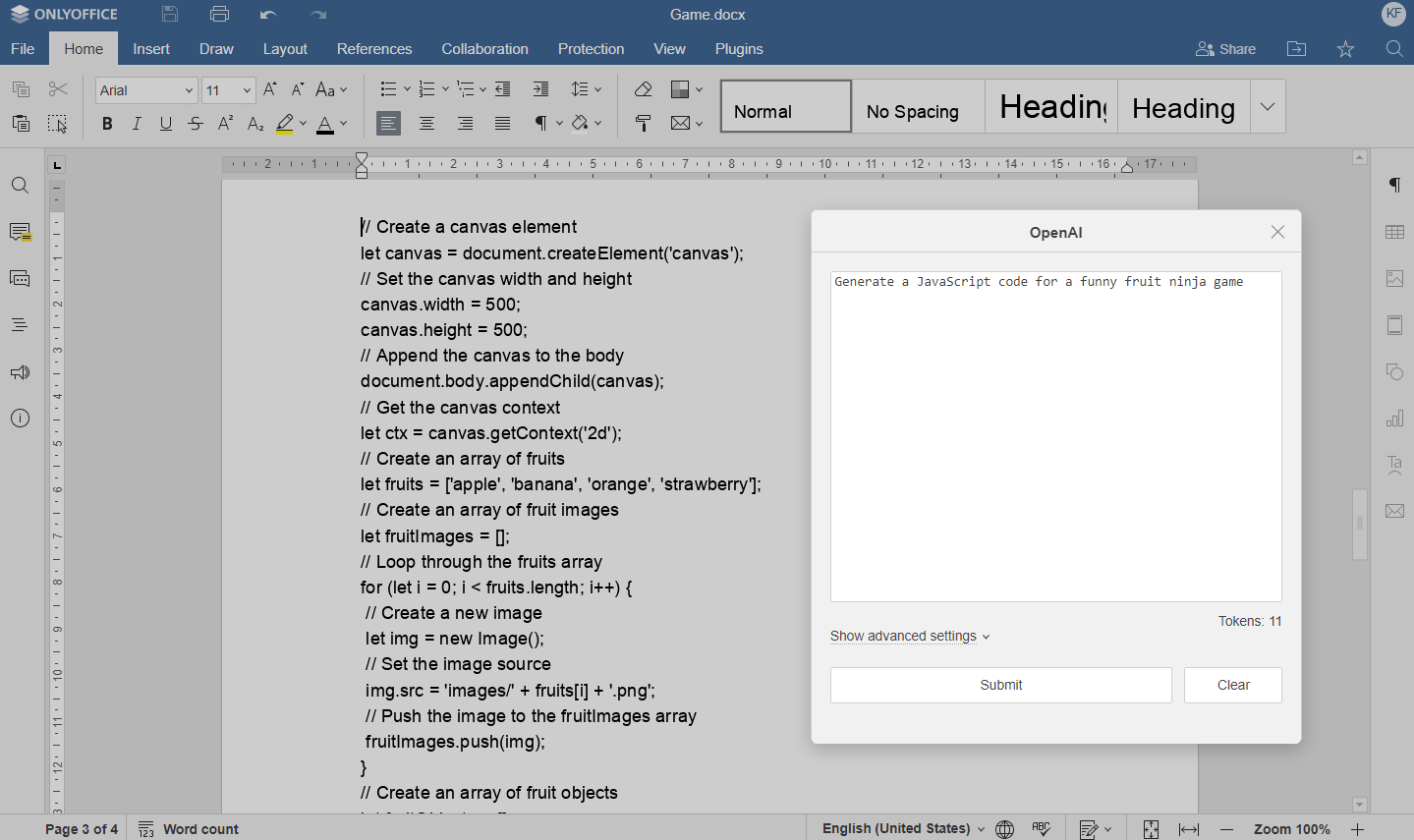Using AI In Digital Education
The currently booming AI trend brings a lot of positive feedback and expectations. At the same time, it can be a bit daunting for some people, which is totally understandable when it comes to the usage of something brand-new.
Nevertheless, various services and tools based on Artificial Intelligence are already being used in digital education, starting from assignment and grading automation to data analysis and customized learning algorithms. For example, popular platforms such as Coursera and Duolingo have adopted AI algorithms for better app personalization for each student.
A well-known AI chatbot, ChatGPT, which has recently overwhelmed the news feeds, is now also widely used for education purposes, both as a separate service and as a plugin within other eLearning solutions, such as Moodle and ONLYOFFICE.
So, let’s discover several ideas for using AI when working with documents which might be really useful.
1. Get Stories Written
Text generation is one of the most widely used features provided by AI chatbots. It can be useful when, for example, you get stuck while writing an essay or any other text, or just need an idea about how to start.
You can make your request in free form, starting with “Tell me a brief history of…” or “Generate/write a short story/passage about…”. Then, you can adopt the ready piece of content inserted in your document, make some edits, or simply get some plot inspiration and make up your own story based on it.
2. Write Creative Taglines
Following the previous option, we also would like to highlight that AI tools can write appealing titles for your papers. For example, we asked ChatGPT to write a creative tagline for a text about snooker and got this one: “Experience the Thrill of Snooker – Every Shot Counts!”.
3. Summarize Texts
Summarizing texts is a frequent task in the educational process. Summing up teaches you to find the most essential ideas in the text, ignore insignificant information, and explain in your own words what that piece of content is about. Summarizing can also improve your comprehension and writing skills as well as memory, for instance, if you do it after reading one time without looking at the text.
You can organize it in the following way: read the text and make your own summary. Then, use the AI helper to summarize the same text and compare the two versions to determine how else you can polish your own (or praise yourself for an excellent job!).
4. Generate Keywords
Yet another option for doing text analysis is generating keywords. It is similar to summarizing, but here you need to find only the most meaningful words related to the main text topic. AI helpers perform such a task easily.
5. Explain Words
When you work on any research paper, report, lecture, presentation, etc., especially if devoted to a topic which is new to you, you often need to check the meaning of new words. Here comes the word analysis feature, which allows you to reveal the semantics.
Just select the word you want to explain, and the AI helper will do the rest. For example, the ChatGPT plugin in ONLYOFFICE Docs can show the word explanation via hyperlink or as a comment. This way, there is no need to launch a separate browser tab with Google Search, and you can concentrate on your tasks.
6. Answer Questions
Along with finding an explanation of word meaning, you are able to quickly ask the AI chatbot (without leaving your document) anything you want to know; for example, to insert additional info in your text, like “What is the history of Denmark?” or “What classification is there for birds?”, or any other.
7. Find Synonyms
Another task which can follow when we speak about working with texts is finding synonyms. For example, you have completed any text, checked and analyzed it, and then you understand that some words appear too often and need to be replaced in order to make your text more smoothly readable. Again, AI assistants can handle this task pretty well.
8. Translate Content
Translating texts or separate words is also a common activity related to working with documents in the educational or teaching process. AI-powered tools or apps are able to assist you to get your work done faster.
9. Generate Images
Imagine you are preparing an essay, a blog post, or another similar writing for any of your classes, and you need to add a title image but can’t find a suitable one, or you just don’t like the suggested options. Or maybe you would like your image to be unique.
You are able to generate a new picture directly based on your text using an AI tool. Sounds nice, doesn’t it?
10. Bonus: Get Code Built
AI helpers are able to create HTML code (for example, for tables), or you can even ask them to generate JavaScript code for a funny game. It can be a nice bonus for those who study IT-related subjects.
Conclusion
AI-based tools and services can bring multiple additional features and scenarios to the collection of eLearning practices. We hope this article gave you some inspiration to try and implement AI chatbots when working with documents and achieve great results.






